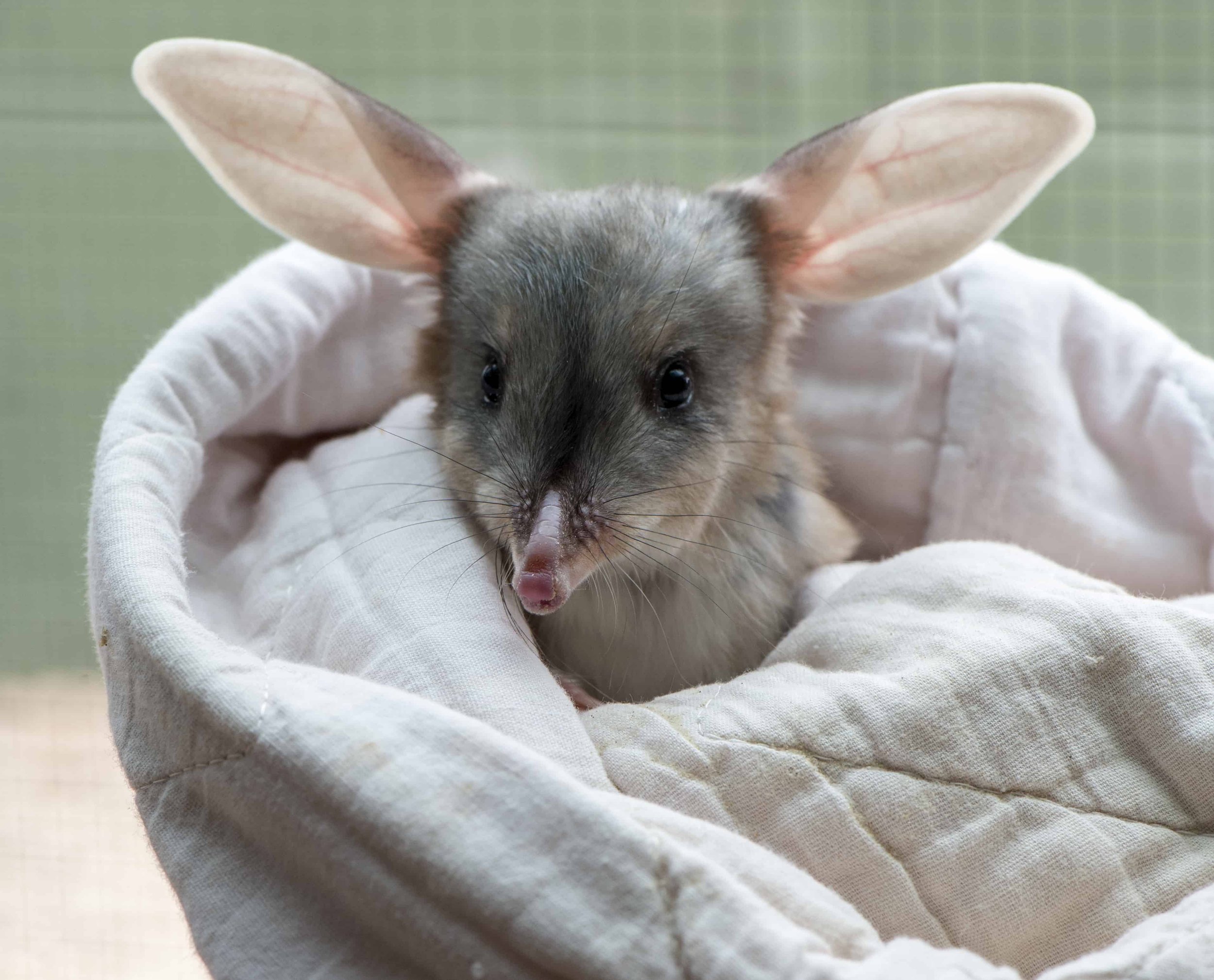The Feel of a Word: bilby
My first citation for the bilby is indicative of the struggle that is at the heart of the story of the bilby and the rabbit. It is from the Australian Town and Country Journal of 1886, and reads:
"Brer Rabbit," as the southern humorist calls him, is driving one of our best-known native animals out of the country and up north. As he marches that way he will exterminate the poor thing. The bilby, a sort of kangaroo rat, is a small burrowing animal, of no harm, and better eating than the rabbit, if we are to believe the old hands. The rabbit has proved itself adaptive and possessed of a good knowledge of economy; stupid as they say it is. When bunny finds a bilby's hole, it immediately annexes the poor little thing's home, and makes Mr. Bilby seek other quarters. The bilbies are therefore moving northward; either not liking the look of the rabbit, or being unable to cope with it.
The bilby gets its name from the Yuwaalaray language of northern New South Wales. It used to be plentiful in most parts of Australia west of the Great Dividing Range, and had adapted to a wide range of environments from grasslands to desert, covering %70 of Australia. It was ousted by the rabbit but it also fared badly at the hands of the settlers because of the burrows which it dug. If a horse went down a bilby hole, the rider and the horse or both stood a good chance of being killed. The bilby is a prodigious digger so bilby country can be riddled with burrows and mounds.
But it was not just rabbits and human beings who brought about the loss of the bilby. Feral animals, destruction of habitat, and fires were also to blame.
There were two kinds of bilbies, classified as the lesser and the greater. The lesser bilby quickly became extinct and, by the 1920s, The Bulletin was describing the greater bilby as rare. And no one seemed to care very much.
But in 1968 a six-year-old girl, Rose-Marie Dusting, wrote a story called Billy the Easter Bilby which she published as a book eleven years later. It was followed by other children’s books on the Easter Bilby theme which achieved some success. Suddenly the general public, liking the story, discovered a new sympathy for the bilby. This was picked up by conservationists twenty years later with a campaign to sell chocolate Easter Bilbies, some part of the price going towards bilby conservation. It probably helped that at the same time conservationists were trying to wean us off the tradition of the Easter Bunny because it made bunnies seem cute and friendly and chocalatey, preventing at least city people from realising that they were a scourge of rural Australia.
So, for a brief period of time, the tables were turned and the bilby was in and the bunny was out. Sadly in the last few years the enthusiasm for the Easter Bilby has dwindled and the big chocolate-makers no longer support it. I guess in our hearts we always knew the Easter Bilby didn’t exist, whereas the Easter Rabbit …
Somehow our perception, inherited from British experience, is that the rabbit is cute and cuddly and called Flopsy, Topsy and Cottontail. This has overridden our actual experience. This perception is of course diligently marketed and reinforced and amplified by Disneyland. There are soft toys, decorated merchandise, and well-known children’s stories. I suppose because most Australians live in cities where they are immersed in a culture that has as one of its features the cute version of the rabbit they are less impressed by the reality of rabbits in outback Australia.
In the same way we have Christmas cards with pine trees decorated with snow rather than gum trees withering in the heat. The fiction of Christmas is more powerful than the reality.
